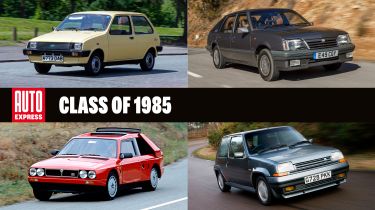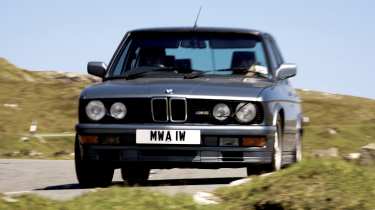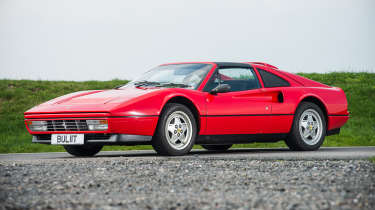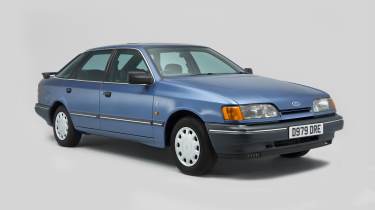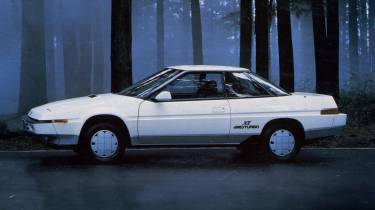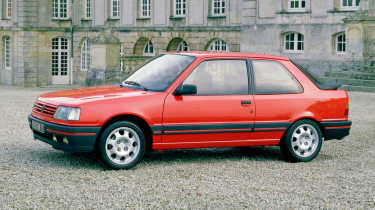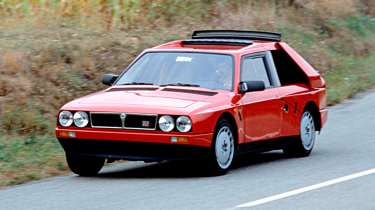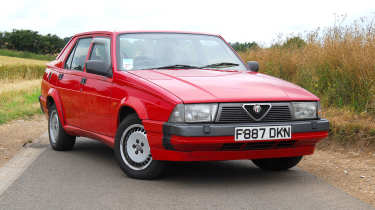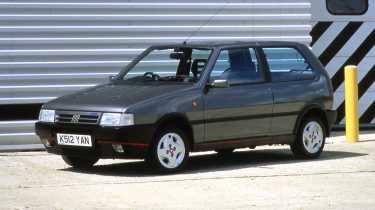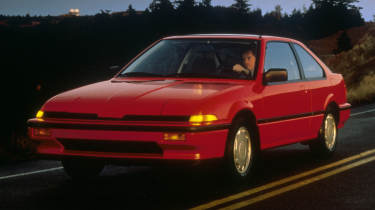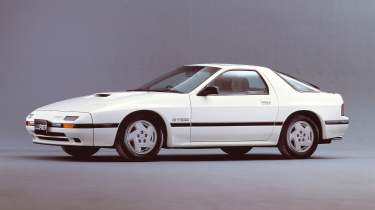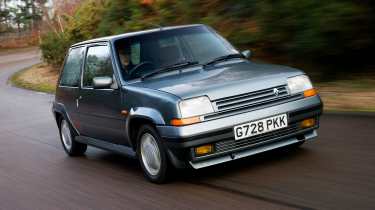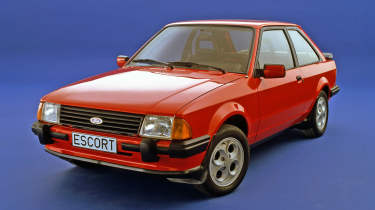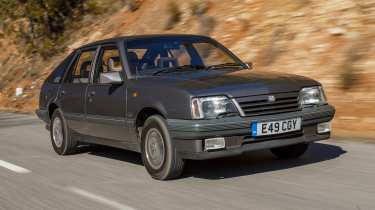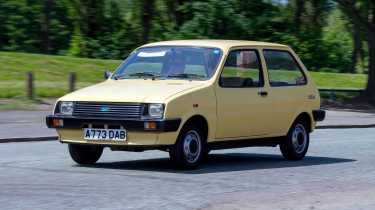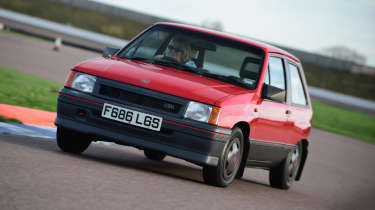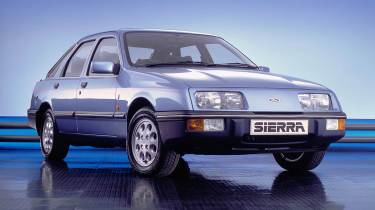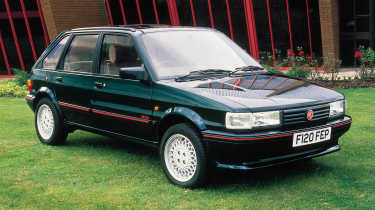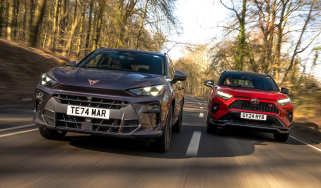Class of 1985: Fantastic mid-80s cars hitting the big four-oh
Is it time to get on board with the boxy and wedgy brilliance of these 40-year-old cars?
Though it feels like the eighties were only 20 years ago, it turns out that one of the strangest decades has nearly half a century under its belt. While that’s distressing for millennials staring down the barrel of 40, it’s great for car enthusiasts, because some truly special metal is about to hit the big four zero, no longer requiring an MoT test every year – and old enough now to be accepted even by the most hard-nosed modern-car-phobics as bona-fide classics.
1985 was a busy year for the world: Ronald Reagan was sworn in for a second term, Mikhail Gorbachev took power in Russia, Windows 1.0 was released, Playboy Magazine announced it would no longer staple its centrefolds, Eastenders debuted, and Live Aid happened… amongst much more, of course.
Sadly, 1985 wasn’t a vintage year for cars, but that doesn’t mean it was wall to wall stinkers. Lineages that are still running to this day were spawned, family cars that formed countless core memories ferried small people from A to B, supercars appeared, bold automotive experiments were unleashed on the world, and at least one model destined to be worth mega money was swiftly flung into the market and is now (probably) sitting in a temperature-controlled underground bunker being gleefully fawned over as it gently appreciates in value.
The midway point of the eighties also came with the sort of cars that when you see them, you start to feel all warm and fuzzy inside. Cars that, perhaps, deep down you know weren’t classics of their particular genre, but were part of the fabric of life in this country. You’d see them on the walk to school, lining the streets of gritty ITV dramas, at work… everywhere.
Yesterday’s trailblazer – or street furniture – can now be had for a song. Although we would recommend you put them through an MoT or health check of some kind every year to make sure they’re in top, shiny shape for future generations to enjoy, even if they no longer require it. Here are some interesting cars launched in 1985 that’ll soon be ticking over the 40-year-old mark, and six of the year’s top sellers.
BMW M5
- Price then: £31,295
- Price now: £20,000-£50,000
Making its debut at the 1985 Amsterdam Motor Show, the E28-generation BMW M5 kickstarted a legend. Production kicked off in late ‘84, but it’s firmly a 1985 car. Boasting a 3.5-litre straight-six motor producing 286hp and 251lb ft of torque, it had enough grunt to keep up with far more senior machines – and room for the whole family.
Ferrari 328
- Price then: £32,200 (GTB)
- Price now: £40,000-£70,000
The car Magnum PI would have driven given the chance, the Ferrari 328 remains a glorious slice of late 20th century mid-engined exotica. With a 3.2-litre V8 planted firmly in the middle of the car driving the rear wheels, it was a mix of noise, excess, and supercar silliness.
Mk III Ford Granada
- Price then: £8,821 (1.8 GL)
- Price now: £1,000-£10,000
Known elsewhere in the world as the Ford Scorpio, the UK’s car was launched as the third-generation Granada (though ‘Scorpio’ was a top trim level). The big Ford family car came with a range of interesting motors (later getting a powerful V6), and space for all. It would later become European Car Of The Year – perhaps not terribly exciting, but it was very good.
Subaru XT
- Price then: £12,500
- Price now: £5,000-£20,000
Today you wouldn’t necessarily associate Subaru with low-slung, sporty coupes (or… much at all, actually), but back in ‘85 it launched the XT. Low, wedgy, and fitted with a turbocharged flat-four-cylinder 1.8-litre engine, it was a perky thing, and surprisingly aerodynamic for its day – resulting in better fuel economy and less wind noise.
Peugeot 309
- Price then: £5,145 (1.1 GE)
- Price now: £500-£10,000
Originally the Peugeot 309 was supposed to be a Talbot, but a decision to put that particular brand to pasture ensured that the French manufacturer added a new horse to the stable. Sales of left-hand-drive cars commenced in mid-1985, and production of right-hand-drive cars for the UK market kicked off later the same year. The one everybody wants, the GTI, arrived in 1986, and some will tell you it’s an even better hot hatch than the 205 GTI…
Lancia Delta S4
- Price then: £40,000 (approx.)
- Price now: £300,000+
In order to compete in the fearsome Group B rally category, manufacturers needed to sell road cars. When Lancia wanted to field its near-500hp Delta S4, it built 200 Delta S4 ‘Stradale’ cars. Priced at 100m Lire (about £40k at the time), it was the most expensive Delta money could buy – no huge surprise given its race inspired make-up.
Alfa Romeo 75
- Price then: £11,649 (2.5 V6)
- Price now: £5,000-£13,000
The wedgy Alfa Romeo 75 defined the look of 1980s Alfa Romeos, and it also proved to be the last rear-wheel drive family car that Alfa made until the current Giulia came along in 2015. With a range of twin-cam four-cylinder engines and a pair of ‘Busso’ V6s, the 75 majored on sporting appeal – even if it forced a few of the usual Alfa Romeo compromises on its owners.
Fiat Uno Turbo
- Price then: £6,899
- Price now: £5,000-£15,000
Fiat doesn’t have the hot hatchback heritage of some French makers, but the Uno Turbo showed it could nail the formula when it needed to. Fiat dropped a 1.3-litre, 104bhp turbocharged four-cylinder into the boxy Giugiaro body, and adorned it with stripes, spoilers, and sporty alloy wheels. It could top 127mph, matching its Renault 5 GT Turbo rival.
Honda Integra
- Price then: £7,150
- Price now: £500-£5,000
Today the Integra is best remembered for high-revving Type R variants, but the model actually debuted in 1985, with sharp styling, pop-up headlights, and a mixture of intrigue and advancement in its engineering, from torsion-bar front suspension to ECU-controlled fuel injection. Tiny UK sales didn’t do this stylish family car justice against much duller Escorts and Maestros.
Mazda RX-7
- Price then: £11,499
- Price now: £5,000-£20,000
By the time the second-generation Mazda RX-7 arrived, the original had sold nearly half a million units globally – so despite rotary power, the RX-7 was no curious niche model. The 1985 car stepped up in size and refinement, but with rack and pinion steering and independent rear suspension, also in handling ability, while its 1.3-litre twin-rotor Wankel engine made 148bhp and promised 0-62mph in 8 seconds flat.
Renault 5 GT turbo
- Price then: £7,360
- Price now: £8,500-£18,000
Five years prior, Renault had unleashed the mad mid-engined Renault 5 Turbo on the world. That car disappeared when the new Gandini-designed Renault 5 debuted in 1984, and in 1985, we got the GT Turbo: a bodykitted, 1.4-litre, 113bhp version with a 7.5-second 0-60mph time. It wasn’t a case of power over finesse though, as the GT Turbo’s handling was right up there with the Peugeot 205 GTI.
1985’s Best Sellers
They may not have been new designs, but these six cars topped the charts in 1985. If you’re of a certain age, you may well remember them unnervingly vividly, and while they’re all still quite attainable today, good examples of all have begun increasing in value, as those who drove them in period, or remember them on the roads, snap them up as budget-friendly classics.
Ford Escort
The third-generation Ford Escort was in its dying days during 1985, but it was still topping the charts. It could also be a van or an estate, and even came in various sporty guises – few didn’t lust after an XR3, RS Turbo, or XR3i. Over 1.5 million Mk3 Escorts hit the road, making it one of the most recognisable cars on UK roads.
Vauxhall Cavalier
After Ford’s challenging Sierra failed to fully capture British hearts and minds, the Mk2 Vauxhall Cavalier shot to the top of the sales charts. Offering space, economy and reasonable performance, Vauxhall’s finest was the car of choice for families about town. The only car that outsold it in 1985 was the Ford Escort.
MG/Austin Metro
How do you follow an act as iconic as the Mini? You develop an all-new car with modern looks, more space, plush features, and a brace of perky(ish) engines, and call it the Metro. Over its 10-year production run, the MG/Austin Metro became the second most popular car on British roads – only behind the Mk3 Ford Escort.
Vauxhall Nova
Not one to let British Leyland get away with all the supermini fun, Vauxhall launched the first-generation Nova in the early eighties to much fanfare. Small, nimble, and able to go toe to toe with Ford Fiestas, Austin Metros, and more besides, the Nova did remarkably well. That said, of the half million sold over its life, fewer than 2,000 remain on the roads - perhaps some fell foul of Max Power culture.
Ford Sierra
While the Sierra wasn’t as popular as the contemporary Cavalier, Ford still shifted over 100,000 examples in 1985. Following up the Cortina was always going to be a tough job, but the Sierra was dynamically brilliant, beating the likes of the Volkswagen Passat in tests. 1985’s XR4x4 added all-wheel-drive capability to the already popular line-up.
Austin/MG Maestro
The 10th biggest-selling car of 1985 was the Austin Maestro. It offered space and modern looks, which was reason enough for some to take the plunge, but there was more to appeal to buyers. It could hold its own against bigger cars, and could be had as a plush Vanden Plas edition – or even a sporty MG.
How to buy a 40-year-old car: what to look for
If you’re reaching your own 40th year in 1985 and staring into the mirror in horror, spare a thought for how a 40-year old car is doing.
Reliability and build quality were advancing rapidly by the mid-1980s and a four-decade old car today is likely to be longer-lasting than a four-decade old car would have been if we’d written this in 2015, or 2005. But you should still make all the usual checks you would when buying any vehicle that’s new to you.
Tyres
Tyres are your first port of call. While well-known brands are always desirable, the wheel and tyre sizes on cars of the mid-1980s were very different to today’s models. This means even the most attentive previous owner might have had to compromise when buying tyres to fit their car – you can’t get Michelin Cup 2s for 14-inch wheels, for instance, so even a hot hatch or sports saloon might be rolling on something less than sporty.
Mechanical
You’ll want evidence that the oil is topped up and in good condition, no milky sludge under the oil filler cap denoting evidence of it mixing with coolant, and no oil, coolant, or petrol leaks – and of course, the engine should run well, even if you can expect more noise than with a modern car. Some meat on the brake discs and pads is welcome (drums are a little more difficult to check), and as suspension components are prone to wear over time, you’ll want to make sure everything here is fairly fresh too.
Bodywork
All but the most mollycoddled of cars, or those recently restored, are likely to have at least some corrosion. The less the better, but unless you’re buying with a project in mind, you’ll want to steer clear of anything bubbling in multiple places, particularly close to MOT-failure areas like suspension or seatbelt mounting points.
Take a test drive
Mid-1980s cars were typically a little tighter to drive than their counterparts of five or ten years previous. Wandering, bouncing, slackness, or suspension noise on the test drive suggests dampers, springs, or bushes could be on their way out. Likewise, carmakers had more or less figured out adequate braking by then (some even offered ABS), so a 1985 car should pull up quickly and in a straight line.
Paperwork
And finally, you’re unlikely to get a full dealer service history with a car this age (though it isn’t unknown, and you’ll have hit the classic car jackpot if you find one with a book full of dealer stamps), but given most 40-year old cars are now in occasional rather than daily use, and probably doted upon by their previous owner, it’s not unreasonable to expect a big folder of bills to back up any maintenance during their, or the previous owner’s tenure.
Looking to buy a future classic but not sure which model is worth investing in? Read our picks of the future classics that could make you money...
Find a car with the experts
